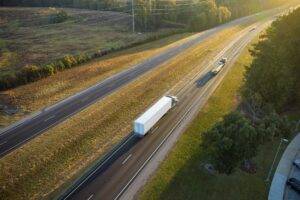Green Freight: Innovations Across Different Modes of Transportation
Green Trucking Quotes – What’s New? The push for sustainability extends beyond trucking to other freight transportation modes, including cargo ships, trains, and air freight. Each mode adopts new technologies and practices to reduce environmental impact and improve efficiency.
Green Innovations in Cargo Shipping
Cargo shipping, a major contributor to global emissions, is seeing significant innovations aimed at reducing its environmental footprint. The use of liquefied natural gas (LNG) as a cleaner alternative to traditional bunker fuel is gaining popularity. Additionally, companies are investing in wind-assisted propulsion systems and advanced hull designs to enhance fuel efficiency. Technologies like scrubbers and selective catalytic reduction (SCR) systems are also being implemented to reduce sulfur and nitrogen oxide emissions (StartUs Insights).
Sustainable Practices in Rail Freight
Rail freight is inherently more energy-efficient than road transport, but there is still room for improvement. Electrification of rail lines is a key focus, reducing reliance on diesel locomotives. Advanced train management systems that optimize speed and scheduling further enhance energy efficiency. Adopting regenerative braking systems, which capture and reuse energy, also contributes to greener rail operations (Inside Logistics).
Innovations in Air Freight
Air freight, though responsible for a smaller share of global freight emissions, is also making strides towards sustainability. The development of biofuels and synthetic fuels that emit fewer pollutants than traditional jet fuels is a major focus. Aircraft manufacturers are designing more fuel-efficient planes with lighter materials and advanced aerodynamics. Additionally, improvements in air traffic management and optimized flight paths are reducing fuel consumption and emissions (Canal Cartage).
Intermodal Freight Solutions
Intermodal freight, which involves the use of multiple transportation modes, is becoming increasingly popular for its environmental benefits. By combining the strengths of different modes, such as the energy efficiency of trains and the flexibility of trucks, intermodal solutions reduce overall emissions. Advanced logistics software helps streamline the transfer of goods between modes, optimizing routes and minimizing delays (Tritown Transport).
Future Prospects and Challenges
The adoption of these green technologies and practices is crucial for achieving sustainability goals in the freight industry. However, significant challenges remain, including the high costs of new technologies and the need for supportive infrastructure. Regulatory support and investment in research and development are essential to overcome these hurdles and drive widespread adoption of green practices (StartUs Insights).
In summary, the future of green freight across different modes of transportation looks bright, with innovative technologies and sustainable practices paving the way for a cleaner, more efficient logistics industry.

